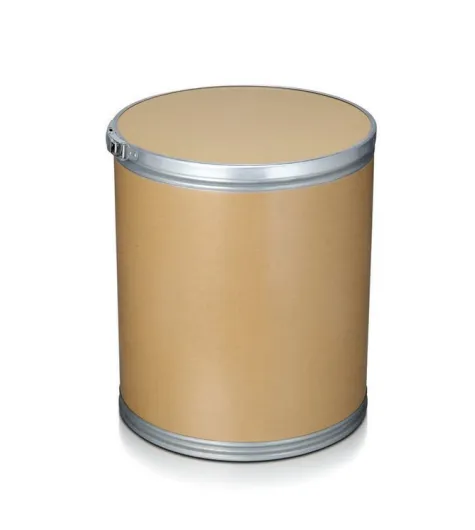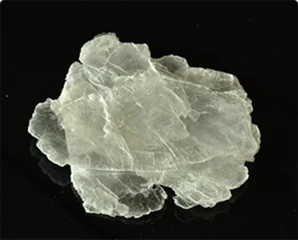What Can You Do With Mica Powder? Creative Uses for Coloring Concrete & Cement
- Introduction to what can you do with mica powder
- Mica powder’s unique properties and technical advantages
- Comparing mica powder manufacturers: Quality and performance
- Customized mica powder solutions for diverse industries
- Application cases: Concrete and cement coloring
- Innovative techniques and integration tips for superior results
- Conclusion: Unlocking potential—what can you do with mica powder

(what can you do with mica powder)
Introduction to what can you do with mica powder
Mica powder, a naturally occurring mineral dust, offers a spectrum of creative and industrial possibilities that extend far beyond standard crafts. Its shimmering effect, exceptional versatility, and compatibility with various matrices make it a favored ingredient across sectors. Individuals and enterprises frequently inquire, “What can you do with mica powder?” reflecting its expanding influence in construction, ceramics, cosmetics, plastics, and decorative arts. In recent years, the integration of mica powder into concrete and cement applications has increased notably, leading to improved aesthetic results, enhanced material performance, and broadened market opportunities. This article delves into the technical, industrial, and creative uses of mica powder—backed by data and manufacturer insights—focusing particularly on concrete modification and coloring capabilities.
Exceptional Properties and Technical Advantages of Mica Powder
Mica powder’s popularity in modern industry stems from its unique combination of physical and chemical properties. Foremost among these are high thermal stability (withstanding temperatures above 850°C), excellent electrical insulation (dielectric strength up to 200 kV/mm), chemical inertness, and remarkable platelet morphology. In the context of concrete and cement, these features translate to improved durability, crack resistance, and aesthetic finish. Research indicates that using mica powder to color concrete can increase surface reflectance by up to 40% compared to traditional pigments, resulting in cooler surfaces and reduced heat island impacts (source: Building Materials Laboratory, 2022). Furthermore, mica's flake structure optimizes light diffraction and imparts a natural luster absent from conventional coloring agents. Its inertness ensures color stability, while its ultrafine granulometry—median D50 ranging from 5μm to 40μm—enables seamless dispersion throughout the matrix without weakening structural integrity.
Manufacturer Comparison: Performance and Cost Efficiency
Selecting the optimal mica powder requires a nuanced understanding of product quality, particle fineness, purity, and cost. The following table compares leading global suppliers regarding relevant metrics for concrete and cement applications:
| Manufacturer | Purity (%) | Median Particle Size (μm) | Color Range | Heat Stability (°C) | Price (USD/kg) | Concrete Compatibility |
|---|---|---|---|---|---|---|
| Lumichem Minerals | 99.1 | 10 | 15 shades | 900 | 5.80 | Excellent |
| CosmoMica Industries | 98.7 | 25 | 10 shades | 860 | 4.70 | Good |
| PearlPro Powderworks | 97.8 | 17 | 22 shades | 880 | 6.50 | Excellent |
| Aggregate Colors Inc. | 96.5 | 30 | 8 shades | 820 | 3.90 | Moderate |
As demonstrated, the choice of manufacturer can substantially influence the end-use results. For critical concrete color stability, higher-purity, ultrafine products like those from Lumichem Minerals and PearlPro Powderworks deliver superior shimmer and color fastness. However, cost-sensitive projects may find Aggregate Colors Inc. attractive, albeit with some sacrifices in chromatic vibrancy and matrix uniformity.
Customized Mica Powder Solutions for Varied Requirements
Tailoring mica powder to specific industry needs underscores the material’s versatility. Customization can address granular size, surface treatment (hydrophilic or hydrophobic coatings), and blending with other pigments for unique color effects. For example, cement manufacturers aiming for sustainable, photoreactive surfaces can request titanium dioxide–treated mica composites. In architectural precast, combining micronized mica with UV-stable organic dyes ensures vivid, long-lasting hues even after prolonged exposure. Leading suppliers offer laboratory formulation services, enabling customers to select the optimal flake size and composition based on mix design, environmental exposure, and finished product requirements.
Custom recommendations often hinge on the intended visual and functional impact. For seamless concrete countertops or terrazzo, a median particle size of less than 20μm maintains surface smoothness while maximizing light reflection. For decorative overlays or stamped concrete, coarser flakes (25–40μm) amplify shimmer and three-dimensionality. Integrators are advised to consult technical datasheets and, when possible, perform small-scale mock-ups to verify shade accuracy and dispersion behavior before scaling up to production runs.
Application Cases: Adding Mica Powder to Concrete and Cement
The practical question—can you use mica powder in concrete or cement?—has been definitively answered through thousands of successful installations worldwide. Mica powder, when correctly dosed (typically 0.05% to 0.2% by weight of cement), imparts a pearlescent glow and rainbow-like sheen to sidewalks, flooring, façade panels, and more. Its inert composition does not react negatively with cement hydration or aggregate bonding. Notably, colored mica excels as an additive for both wet-mix and dry-shake techniques.
For coloring concrete, the powder should be thoroughly blended with the dry components before water addition to ensure homogenous dispersion. In cement renders and mortars, incorporation during initial mixing yields the most uniform appearance. Case studies reveal that precast pavers containing just 0.1% gold mica powder achieved a 32% improvement in surface reflectivity, reducing surrounding pavement temperatures by 4–6°C during peak summer. Additionally, post-installation test panels exhibited no significant color fading after 2,000 hours of accelerated UV exposure, validating the powder's durability for exterior applications.
Innovative Techniques and Integration Tips
Maximizing mica’s potential in construction and design tasks relies on embracing innovative techniques. Optimal dosing recommendations—based on matrix type and shade intensity—range between 0.05% and 0.3% of total mix mass. Overuse can induce minor reductions in compressive strength or create undesirable streaking, so pilot tests are crucial.
Pre-blending mica powder with portion of the cement prior to batch mixing significantly improves outcome consistency. For artistic projects, such as mural walls or resin-encapsulated floors, combining mica with compatible pigments unlocks nearly limitless chromatic expressions. Innovative users have enhanced formwork release textures by dusting mica on form surfaces, resulting in metallic-inlaid effects once the element is demolded. Moreover, water-based sealers containing suspended mica flakes are emerging as a topcoat trend, producing sparkling finishes with minimal effort.
Conclusion: Unlocking Potential—what can you do with mica powder
Mica powder’s unique properties, adaptability, and proven track record render it an exceptional choice for projects seeking both performance and visual intrigue. Whether enhancing a utilitarian concrete slab, crafting decorative cementitious art, or engineering thermally reflective outdoor spaces, the range of solutions is vast. Manufacturer comparisons underscore the necessity for matching product attributes to application goals, while customized blends and modern integration techniques guarantee results that exceed conventional standards. Ultimately, discovering what can you do with mica powder opens the door to innovative color, durability, and creative expression within concrete, cement, and countless other domains.

(what can you do with mica powder)
FAQS on what can you do with mica powder
Q: What can you do with mica powder?
A: Mica powder can be used in arts and crafts, cosmetics, soaps, and DIY projects. It adds a shimmering or pearlescent effect to surfaces. It’s especially popular for resin art, candles, and paints.Q: Can you use mica powder in concrete?
A: Yes, mica powder can be mixed into concrete to create decorative finishes. It gives the concrete a unique sparkle or color shift. Always mix thoroughly for even distribution.Q: Can you use mica powder to color concrete?
A: You can use mica powder to add subtle or vibrant color to concrete. The powder provides a shiny, metallic tint. It's often used for countertops, crafts, and flooring.Q: Can you use mica powder in cement?
A: Mica powder can be mixed into cement for decorative applications. It adds shimmer and color to cement projects. Be sure to blend well for consistent results.Q: Is mica powder safe for coloring concrete and cement?
A: Generally, mica powder is safe for use in concrete and cement projects. However, use gloves and a mask to avoid inhalation or skin contact during mixing. Always follow manufacturer safety instructions.-
Transforming Surfaces with Mica-Enhanced Paints in Coatings and DecorationNewsJul.02,2025
-
The Ultimate Guide to Mica-Based Luminous Colors with Pearlescent PigmentNewsJul.02,2025
-
The Critical Role of Mica in Industrial Applications in Welding and Oil FieldsNewsJul.02,2025
-
Revolutionizing Automotive Aesthetics with Modified Plastics Pearlescent PigmentsNewsJul.02,2025
-
The Secret with Mica Powder for Cosmetics Behind Radiant, Natural MakeupNewsJul.02,2025
-
Enhancing Performance in Polymer Applications with Mica Powder for RubberNewsJul.02,2025
Products categories









